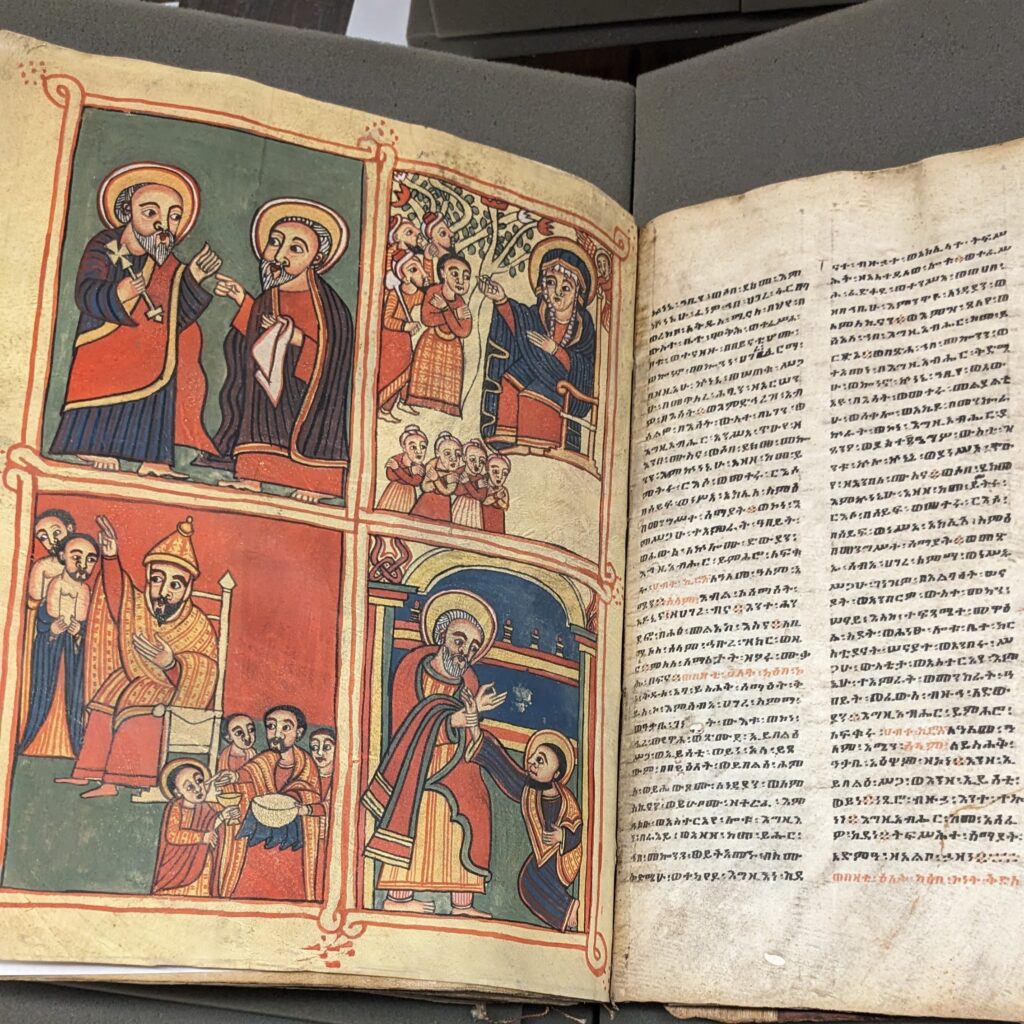If you want to take your research in the humanities to the next level while here at Princeton, one of the best ways you can do that is by availing yourself of Princeton’s Special Collections. Home to vast stockpiles of manuscripts, rare books, coins, and other materials, Special Collections is a great place for students who want to pursue rigorous and impressive humanities research while making use of the excellent resources that Princeton has to offer. Many of these articles were donated by benefactors or acquired by the university specifically so that they could be researched by professors, students, and other researchers. In this article, I’ll present some reasons why you might consider checking out Special Collections, and then follow that up with a basic “how to” for when you visit.

A manuscript of an Ethiopic Synaxarion in Special Collections
One of the biggest challenges when pursuing research in the humanities is figuring out how to say something that has not already been said. There are few things that are more deflating than having a great idea, doing a little bit of digging, and finding out that someone has already published a paper arguing for exactly what you wanted to say. Sometimes it feels like no stone has been left unturned when trying to write about Plato’s Republic or the art of Michelangelo— and while there is certainly a need for further scholarship on these and other major works, sifting through mounds of secondary literature in order to find a gap in the scholarship is a time-consuming and often unexciting task. Not everyone has the ability to casually fly to Italy to look at the Sistine Chapel or pop into the British Library to look at an early Greek manuscript. This is where Princeton’s Special Collections comes into play. Princeton has, right on campus, a vast collection of manuscripts, archival material, and other original sources which are ripe for scholarly examination. Many of these have not been thoroughly studied, and Princeton students are uniquely positioned to research them.
The two main places on campus where you can access these resources are Mudd Manuscript Library (which houses Princeton’s own archive and a large collection of public policy archival materials) and the Special Collections section on C Floor of Firestone (which houses almost everything else). Mudd Manuscript Library deserves an article of its own, and so I’ll focus instead on how researching in Firestone works. First, you’ll need to make a Research Account on the Library’s website. Second, you should have a general idea of what sorts of materials you want to research, because you can’t wander around the shelves— instead you must request specific materials and then they will be brought to you. If this seems intimidating, fear not! The Guide to Topics page is an excellent starting point. The search bar on the Finding Aids page can help you find relevant materials, and Special Collections has a large team of experts who can help you as well. Third, after digitally submitting a “reading room request” for materials of interest, head downstairs to Special Collections, which is open 9:00-4:45 on weekdays. You’ll have to leave your belongings in a locker outside, but you can bring in your computer. After checking in and washing your hands, you can take a seat in the reading room, and your materials will be brought out for you to examine.
Being able to do hands-on research with all sorts of rare materials is an amazing privilege which any Princeton student can exercise at any time. The breadth of Special Collections’ resources is truly astounding— they have everything from Ancient Egyptian papyri to drafts of famous political cartoons to the personal papers of F. Scott Fitzgerald. They even have John James Audubon’s personal shotgun. There is something here for any and every student to work with.
Next time you really want to impress your professor with a paper, think about making use of the resources in Special Collections. In my own recent experience, I wanted to research something related to Ethiopia for a final paper for a seminar I’m currently taking. After looking at the Ethiopic Manuscripts catalog, I figured out what exactly I wanted to look at— a few Ethiopic “magic scrolls” in the Princeton collection. I wanted to look at textual variants in Ethiopic biblical quotations, and these scrolls, which are unpublished and only available in Firestone library, turned out to contain variant biblical texts of great interest to me. Getting settled in the reading room and examining the scrolls was a very smooth process, and I found some puzzling parts which I’m in the process of unpacking for my paper. If you’re in a similar position, and are looking for something to research, take a look at Special Collections and take a look at the amazing resources right beneath our feet.
—Shane Patrick, Humanities Correspondent

